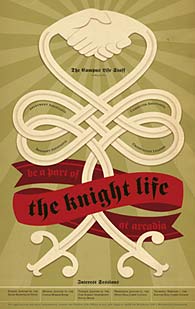A comfort only provided by the malleability of memory that allows our loneliness to momentarily dissipate through the manipulation of what was

Healy tells the story of the launch of bipolar disorder at the end of the 1990s. A specialised journal, Bipolar Disorder, was established, along with the International Society for Bipolar Disorders and the European Bipolar Forum; conferences were inundated with papers commissioned by the industry; a swarm of publications appeared, many of them signed by important names in the psychiatric field but actually ghost-written by PR agencies. Once the medical elites were bought and sold on the new disease, armies of industry representatives descended on clinicians, to ‘educate’ them and teach them how to recognise the symptoms of bipolar disorder.
{ London Review of Books via Phil Gyford | Continue reading }
images { 1. Picasso, Sleeping woman, gray symphony, 1943 | Gagosian Gallery, until December 23, 2010 | 2. Thomas Dworzak }
Tut tut child! Everything’s got a moral, if only you can find it.
I hate to be the one to tell you this, but there’s a whole range of phrases that aren’t doing the jobs you think they’re doing.
In fact, “I hate to be the one to tell you this” (like its cousin, “I hate to say it”) is one of them. Think back: How many times have you seen barely suppressed glee in someone who — ostensibly — couldn’t be more reluctant to be the bearer of bad news? A lack of respect from someone who starts off “With all due respect”? A stunning dearth of comprehension from someone who prefaces their cluelessness with “I hear what you’re saying”? And has “I’m not a racist, but…” ever introduced an unbiased statement?
These contrary-to-fact phrases have been dubbed (by the Twitter user GrammarHulk and others) “but-heads,” because they’re at the head of the sentence, and usually followed by but. They’ve also been dubbed “false fronts,” “wishwashers,” and, less cutely, “lying qualifiers.”
The point of a but-head is to preemptively deny a charge that has yet to be made, with a kind of “best offense is a good defense” strategy. This technique has a distinguished relative in classical rhetoric: the device of procatalepsis, in which the speaker brings up and immediately refutes the anticipated objections of his or her hearer. When someone says “I’m not trying to hurt your feelings, but…” they are maneuvering to keep you from saying “I don’t believe you — you’re just trying to hurt my feelings.”
Once you start looking for these but-heads, you see them everywhere, and you see how much they reveal about the speaker. When someone says “It’s not about the money, but…”, it’s almost always about the money. If you hear “It really doesn’t matter to me, but…”, odds are it does matter, and quite a bit. Someone who begins a sentence with “Confidentially” is nearly always betraying a confidence; someone who starts out “Frankly,” or “Honestly,” “To be (completely) honest with you,” or “Let me give it to you straight” brings to mind Ralph Waldo Emerson’s quip: “The louder he talked of his honor, the faster we counted our spoons.”
Read the directions and directly you will be directed in the right direction

You think it would be really fun to have sex with me. Because, I think you can tell from my posts, I’ll do anything. But maybe you can also tell from my posts that it’s a little bit weird. Because you know that I’ll say anything, too.
Asperger Syndrome compromises one’s ability to read nonverbal social cues. A simple example of this deficit is answering the question, “How are you?” It is loaded with so many nonverbal issues that I simply freeze. Even if you tell me, “Just say fine,” sometimes the situation looks special to me, and I can’t figure out why it’s special, so I can’t talk.
So I’ve spent my life teaching myself the rules for what to do in each social situation. I study people, make notes for myself, and then test the notes to see what other situations my notes apply to. (…)
When I think about my sexual history, I think it is me basically not understanding that there are rules.
In college, where most people are experimenting with the rules of sex, I was missing them. Maybe because I was raised by my grandma, I honestly believed that if you had sex, it meant you were getting married. So I lost my virginity to a guy who said he’d marry me.
And on that day, I had no idea how sex worked. I don’t know why I had not bothered to find out.
He was propped up on his arms when he couldn’t find my vagina with his penis, so he said, “Put me inside.”
I said, “What?”
“Inside you. Use your hand.”
“I don’t know where the hole is.”
“What? Are you kidding me?”
“There are a lot of holes down there. I don’t know which one is for sex.”
“You are so stupid.”
He eventually put his penis in. He said, “Am I in?”
I said, “I don’t know.”
Then he came. And I returned to doing homework. (…)
So then I get married. The first time. We both have Asperger’s. We both like reading about sex, but having it is more traumatic. He would not go down on me, so I started writing obsessively about his not going down on me. (…)
We had sex two times in six years after we had a kid. And I got pregnant both times because I have studied my ovulation since I was 24, and I’m an ace at sticking my finger up my vagina and 1) gauging how open my cervix is and 2) pulling out some mucus on my finger and checking to see how elastic it is.
Even now I can’t help getting excited about ovulation. Go to the bathroom right now and check your cervical mucus. It’s fascinating. If it’s elastic you are ovulating. I can peg my ovulation to the hour if I check every half-hour, which I can do because I can stick my hand in my vagina anywhere—even in a job interview, if the person leaves the room to get some water. So that’s why I was able to have a kid (and a miscarriage) only having sex two times. (…)
And now, here I am with the farmer.
At this point, sex should be low pressure for me. I am one of the one percent of women who can have an orgasm just by thinking about having an orgasm. I’m not sure why this is. Maybe because my mom taught me to do Kegel exercises before I even got my first period. I can orgasm ten times before the guy has one.
photo { Christophe Kutner }
I wonder if I’ve been changed in the night? Was I the same when I got up this morning?

An Irish jury awarded nearly $14 million in damages on Thursday to a man who claimed that his former employers had slandered him by insinuating that he had made improper advances to a female colleague during a business trip.
The man, Donal Kinsella, insisted that he had been sleepwalking during a trip to Mozambique in 2007 when he showed up, naked, at the door of a female colleague’s hotel room three times in one night, The Irish Times reported.
He later filed suit against the mining company that employed him at the time because it had referred to the incident in a press release explaining why he had been asked to resign from the company’s audit committee, on which the same female colleague served.
During the trial, the court heard that Mr. Kinsella had also been drinking and taking painkillers on the night in question.
What is the use of repeating all that stuff, if you don’t explain it as you go on?

Rupert Murdoch, head of the media giant News Corp, and Steve Jobs, the chief executive of Apple, are preparing to unveil a new digital “newspaper” called the Daily at the end of this month, according to reports in the US media.
The collaboration, which has been secretly under development in New York for several months, promises to be the world’s first “newspaper” designed exclusively for new tablet-style computers such as Apple’s iPad, with a launch planned for early next year.
photo { Jessica Hische }
‘The mind has greater power over the emotions and is less subject thereto, in so far as it understands all things as necessary.’ –Spinoza

Happiness is ideal, it’s the work of the imagination. It’s a way of being moved which depends solely on our way of seeing and feeling. Except for the satisfaction of needs, there’s nothing that makes all men equally happy.
{ Sade, The Crimes of Love, 1800 }
photo { Jesse Kennedy }
Come back, baby, let’s talk it over one more time

Talking out our differences on controversial scientific and technological issues may be just the wrong way to reach agreement, new research suggests. (…)
The more people discussed the topic, the researchers found, the more wedded they became to their initial positions, either in support of or in opposition to the facility. The finding mirrors earlier research by Binder and some of the same co-authors around the topic of stem cell research. The more like-minded people in a homogenous group discussed the controversial science, the researchers found, the more extreme their positions became.
Pause, flash

{ A new look at traffic lights | more | via copyranter | Related: Control Safety Traffic Light Concept }
The 120 days of Sodom and other writings
Rising ocean levels brought about by climate change have created a flood of unprecedented legal questions for small island nations and their neighbors.
Among them: If a country sinks beneath the sea, is it still a country? Does it keep its seat at the United Nations? Who controls its offshore mineral rights? Its shipping lanes? Its fish?
And if entire populations are forced to relocate — as could be the case with citizens of the Maldives, Tuvalu, Kiribati and other small island states facing extinction — what citizenship, if any, can those displaced people claim?
related { Ten Amazing Uninhabited Islands }
In order to know virtue, we must first acquaint ourselves with vice

Normally when I interview someone, I give them a business card and maybe the latest issue of New Scientist. Today, I give Tao a bottle of my own pee.
Chemist Tao doesn’t find this odd. Urine, he believes, could help solve the world’s energy problems, powering farms and even office buildings. And he has agreed to use my offering to show me how.
Urine might not pack the punch of rocket fuel, but what it lacks in energy density it makes up for in sheer quantity. It is one of the most abundant waste materials on Earth, with nearly seven billion people producing roughly 10 billion litres of it every day. Add animals into the mix and this quantity is multiplied several times over.
As things stand, this flood of waste poses a problem. Let it run into the water system and it would wipe out entire ecosystems; yet scrubbing it out of waste water costs money and energy. In the US, for instance, waste water treatment plants consume 1.5 per cent of all the electricity the country generates. So wouldn’t it be nice if, instead of being a vast energy consumer, urine could be put to use. (…)
To show me the process in action, Tao and Lan add my urine to the fuel cell. As it flows into the cell, a screen shows the output voltage rising to about 0.6 volts. While this prototype is too small to power a light bulb – its output is about half that of an AA battery – scaling up the cell and connecting several cells together should produce practical amounts of power.
artwork { Andy Warhol, Oxidation Painting, 1978 | copper metallic pigment and urine on canvas | Read: Andy Warhol’s Piss Paintings }
I like tulip. Tulip is much better than mongoloid.

Flops lose studios insane amounts of money. Flops have irrevocably hurt the careers of filmmakers and actors, with the bewildering exception of John Travolta. (…)
A big enough bomb can have a permanent, negative impact not just on someone’s career, but on the entire film industry: Michael Cimino’s notorious 1980 flop “Heaven’s Gate” was so expensive ($44 million, a fortune at the time) and disastrous (earning almost nothing back) it essentially bankrupted United Artists. It only took one flop for Cimino, fresh from winning best picture and best director Oscars for “The Deer Hunter,” to go from the hottest filmmaker in Hollywood to persona non grata. Cimino’s career never really recovered; he hasn’t directed a film since 1996’s “The Sunchaser” and today is a veritable recluse.
So it might seem surprising, or even perverse, to suggest that there’s something redeeming about flops — even, in fact, that we need them. (…)
An era’s great flops serve countless functions in pushing the art and industry of filmmaking forward. They introduce technological innovations. They help filmmakers and actors — those that manage to work again, at least — learn how to maximize their strengths and minimize their weaknesses. And for the people involved in them, flops are something more than a wake-up call: They can even rescue a career.
White spades hangin’ on the telephone

Social cognition is the scientific study of the cognitive events underlying social thought and attitudes. Currently, the field’s prevailing theoretical perspectives are the traditional schema view and embodied cognition theories. Despite important differences, these perspectives share the seemingly uncontroversial notion that people interpret and evaluate a given social stimulus using knowledge about similar stimuli. However, research in cognitive linguistics (e.g., Lakoff & Johnson, 1980) suggests that people construe the world in large part through conceptual metaphors, which enable them to understand abstract concepts using knowledge of superficially dissimilar, typically more concrete concepts.
{ Psychological Bulletin | Continue reading }
In general structure, Kant’s model of the mind was the dominant model in the empirical psychology that flowed from his work and then again, after a hiatus during which behaviourism reigned supreme (roughly 1910 to 1965), toward the end of the 20th century, especially in cognitive science.
Three ideas define the basic shape (‘cognitive architecture’) of Kant’s model and one its dominant method. They have all become part of the foundation of cognitive science.
• The mind is complex set of abilities (functions). (As Meerbote 1989 and many others have observed, Kant held a functionalist view of the mind almost 200 years before functionalism was officially articulated in the 1960s by Hilary Putnam and others.)
• The functions crucial for mental, knowledge-generating activity are spatio-temporal processing of, and application of concepts to, sensory inputs. Cognition requires concepts as well as percepts.
• These functions are forms of what Kant called synthesis. Synthesis (and the unity in consciousness required for synthesis) are central to cognition.
These three ideas are fundamental to most thinking about cognition now. Kant’s most important method, the transcendental method, is also at the heart of contemporary cognitive science.
• To study the mind, infer the conditions necessary for experience. Arguments having this structure are called transcendental arguments.
photo { John Zimmerman }
Love is just a system

{ Unsourced and old | Courtesy La Shampoo }
Me jumpin out 30 tho on my neck

1 Repetitive Transcranial Magnetic Stimulation will be the only path to enlightenment
2 Dolphins should be treated as “Non human Persons”
3 Among the eight circuits of consciousness, preferred are the “Stellar” rather than “larval” circuits
4 In the future, we will live in houses made out of aerogel, metamaterials, amorphous metal and all of our clothing will be made out of E-textiles
5 All people under the age of thirty will live to be immortal*
* To increase probability of this, never touch anything made of plastic
{ ( We Get Our Dope From Beyond The Sun ) | Continue reading }
photo { Santiago Mostyn | More: Excerpt is the first book released by the 28-year-old Mostyn, who, much like McGinley, creates his work almost as a documentary process achieved by constant traveling. }











